Body length: 6–40 mm.
Eyes: eye interommatidial setaeseta:
a sclerotized hair-like projection of the cuticle
absent, eye deeply emarginateemarginate:
notched at the margin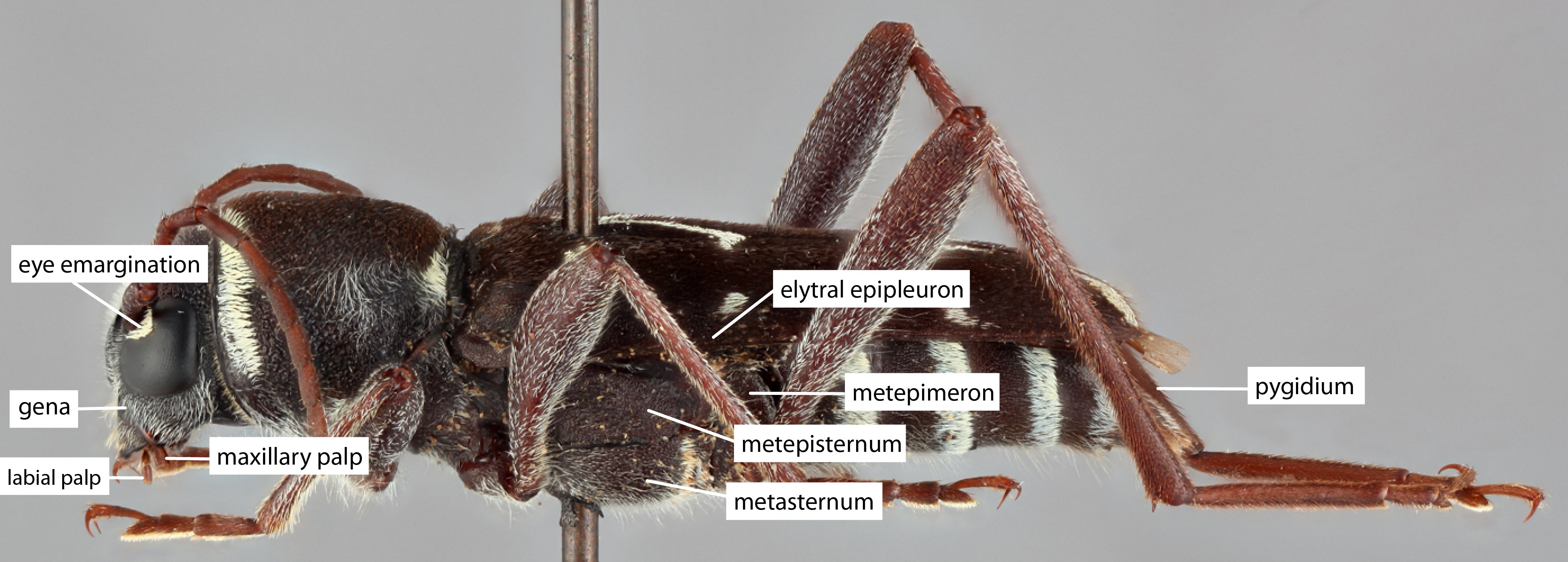 > half width, eye ommatidial density fine.
> half width, eye ommatidial density fine.
Antennaeantenna:
in larval and adult insects, paired segmented appendages, borne one on each side of the head, functioning as sense organs and bearing a large number of sensilla
: antennal length reaching/surpassing end of body, antennal flagellar segments elongateelongate:
much longer than wide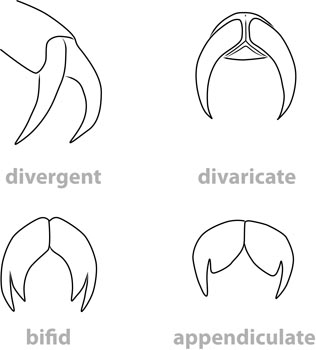 , scapescape:
, scapescape:
the first proximal segment of the antenna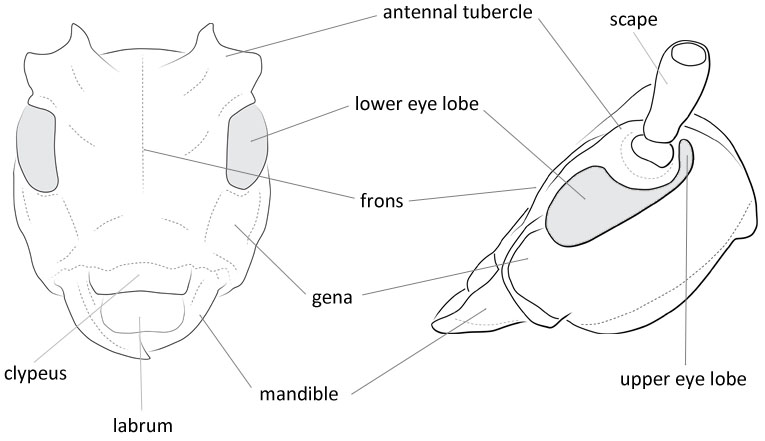 cicatrixcicatrix:
cicatrixcicatrix:
a scar; a scar-like structure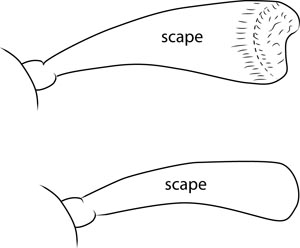 (scar) at apexapex:
(scar) at apexapex:
end of any structure distad to the base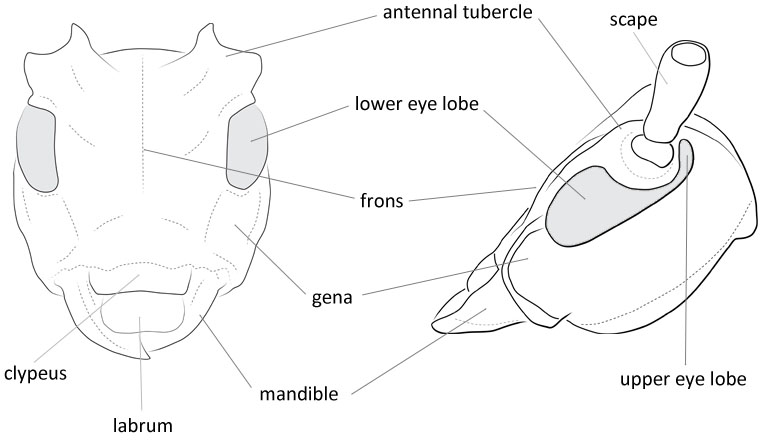 , antennal segment 3 > scapescape:
, antennal segment 3 > scapescape:
the first proximal segment of the antenna .
.
Pronotumpronotum:
the upper and dorsal part of the prothorax : pronotumpronotum:
: pronotumpronotum:
the upper and dorsal part of the prothorax shape transversetransverse:
shape transversetransverse:
broader than long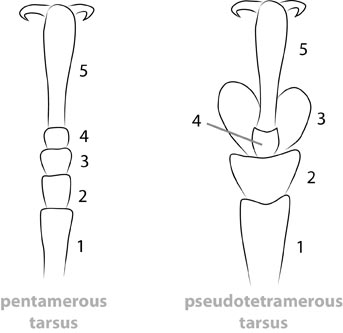 , pronotumpronotum:
, pronotumpronotum:
the upper and dorsal part of the prothorax lateral armature acute spinespine:
lateral armature acute spinespine:
a protuberance with an acute (sharp) distal end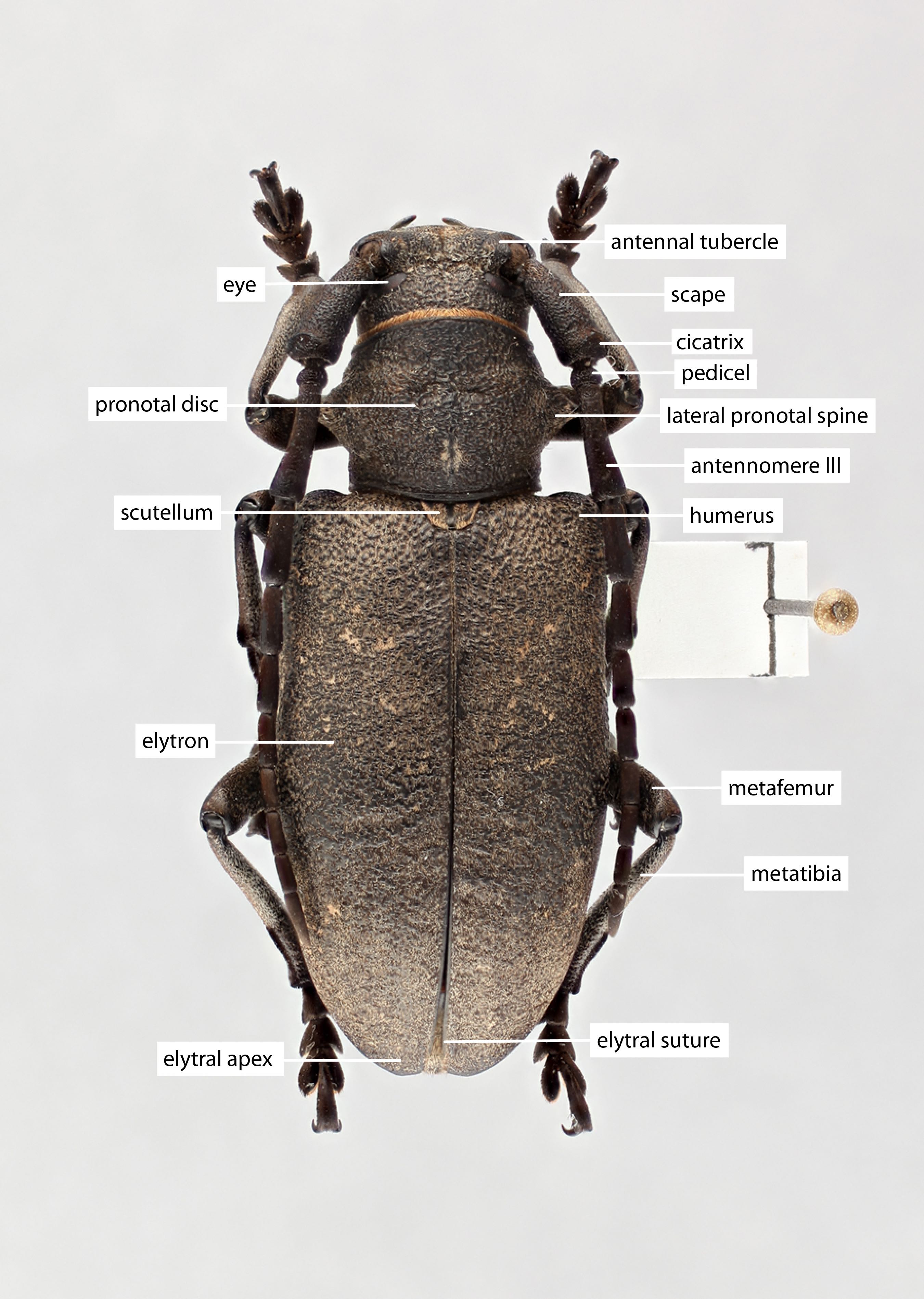 .
.
Prosternum: prosternal processprosternal process:
a posterior extension of the prosternum between the coxae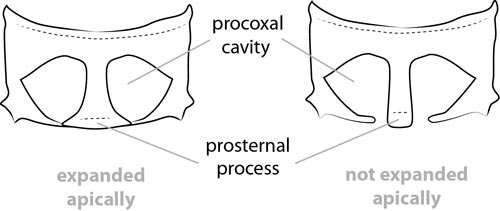 dilated at apexapex:
dilated at apexapex:
end of any structure distad to the base , procoxal cavities closed posteriorly, rarely open posteriorly.
, procoxal cavities closed posteriorly, rarely open posteriorly.
Elytraelytron:
the leathery forewing of beetles, serving as a covering for the hind wings, commonly meeting opposite elytron in a straight line down the middle of the dorsum in repose
: elytral length reaching or close to end of abdomen, elytral apicesapex:
end of any structure distad to the base
rounded or truncatetruncate:
cut off squarely at the tip , emarginateemarginate:
, emarginateemarginate:
notched at the margin or with tooth or spinespine:
or with tooth or spinespine:
a protuberance with an acute (sharp) distal end , elytral color black, brown, yellow or orange, elytral color pattern present or absent.
, elytral color black, brown, yellow or orange, elytral color pattern present or absent.
Legs: visible tarsomerestarsomere:
subdivision or article of the tarsus, usually numbering from two to five : 4, femora slender, protibial spursprotibial spur:
: 4, femora slender, protibial spursprotibial spur:
sclerotized spine(s) located at the distal tibia; can be single, double, or absent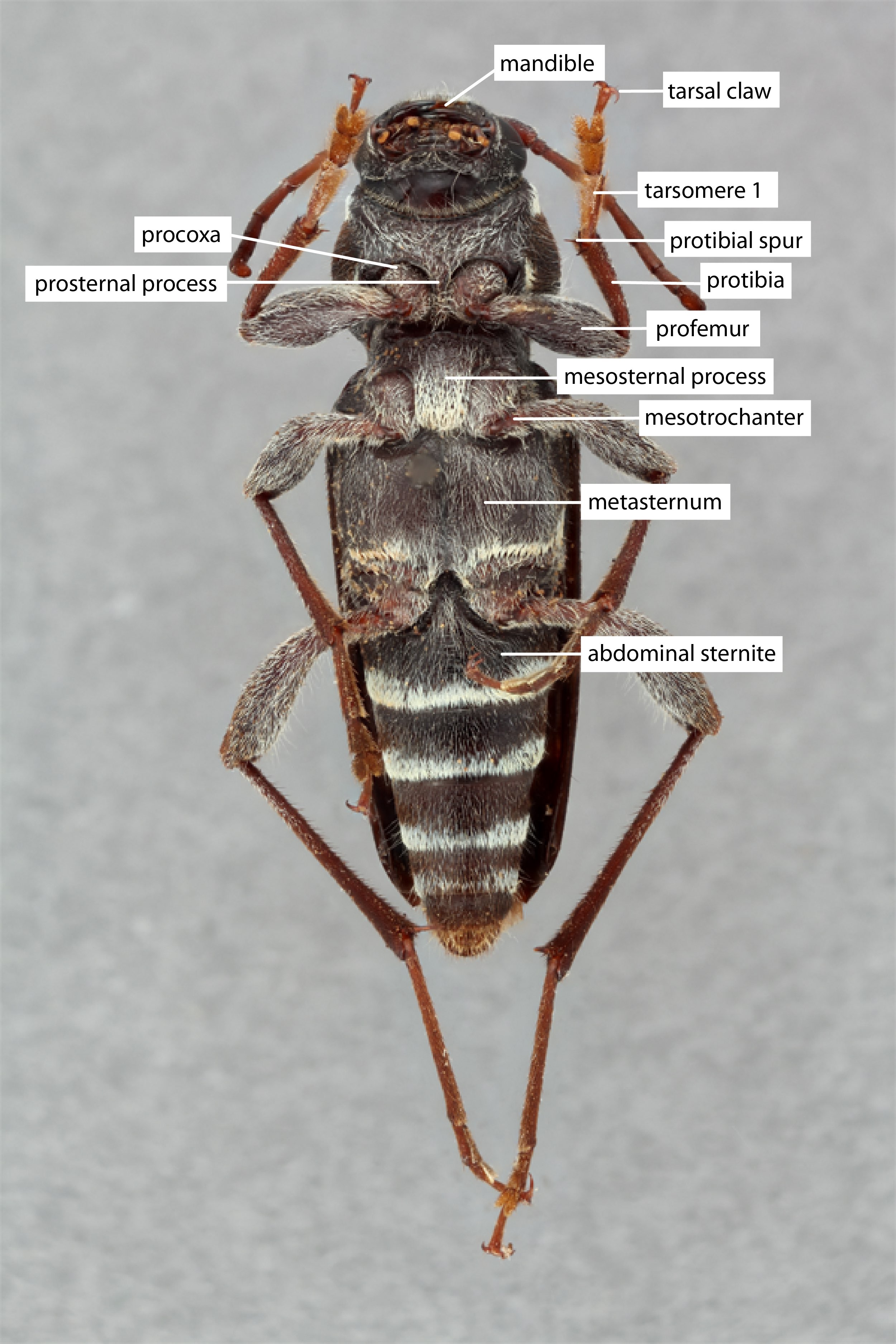 : 2, tarsal clawstarsal claw:
: 2, tarsal clawstarsal claw:
usually paired claws of the pretarsus, at the distal end of the leg simple.
simple.
Potemnemus, Thermonotus
The silky appearance given by fine elytral setaeseta:
a sclerotized hair-like projection of the cuticle
, truly 4-segmented tarsitarsus:
the leg segment distal to the apex of the tibia, bearing the pretarsus; consists of one to five tarsomeres (including pretarsus)
resulting from fusion of tarsomerestarsomere:
subdivision or article of the tarsus, usually numbering from two to five
4+5, bent protibiae, and a spine-free elytral surface will distinguish Acalolepta. Thermonotus has a posteromedial tubercletubercle:
a small knoblike or rounded protuberance
on the pronotumpronotum:
the upper and dorsal part of the prothorax
. Subgenus “Dihammus is characterized by a preapical tooth on the internal side of the male protibia, while Acalolepta s. str. shows a simple furrow” (Vitali 2018Vitali 2018:
Vitali F. 2018. The Acalolepta australis species-group, with revalidation of Dihammus Thomson, 1864 as a subgenus (Coleoptera, Cerambycidae). Les Cahiers Magellanes (NS) 31: 25–39, 10 figs.).
Palearctic: Asia, Indomalaya, Australasia
Abies, Picea, Larix, Pinus; Taxus; broadleaf
239 species in subgenus Acalolepta; Dihammus: 17 spp.; Pilohammus: 2 spp.; Plicatodihammus: 1 sp. Conifers: A. (A.) fraudator, A. (A.) sejuncta.
Cypriola Thomson, 1864Thomson, 1864:
Thomson J. 1864–65. Systema cerambycidarum ou exposé de tous les genres compris dans la famille des célrambycides et familles limitrophes. H. Dessain, Liége, 578 pp. [1864: pp. 1–352; 1865: 353–578; Also published in Mémoires de la Société Royale des Sciences de Liége 19 [1866]: 1–578].
Neanthes Pascoe, 1878
Haplohammus Bates, 1884
Niphohammus Matsushita, 1932 [for Dihammus]
Subgenus Acalolepta Pascoe, 1858
Subgenus Dihammus Thomson, 1864Thomson, 1864:
Thomson J. 1864–65. Systema cerambycidarum ou exposé de tous les genres compris dans la famille des célrambycides et familles limitrophes. H. Dessain, Liége, 578 pp. [1864: pp. 1–352; 1865: 353–578; Also published in Mémoires de la Société Royale des Sciences de Liége 19 [1866]: 1–578].